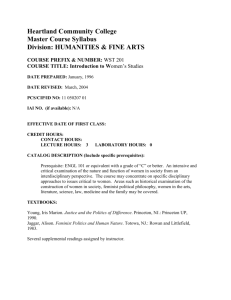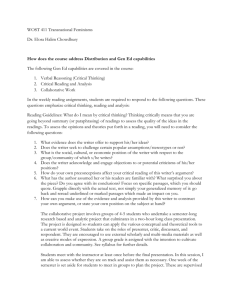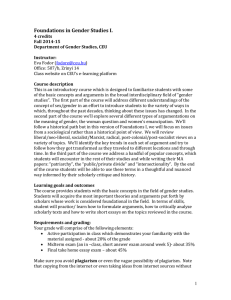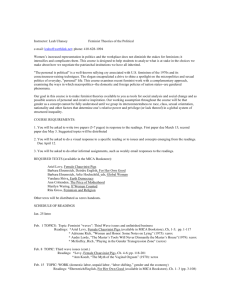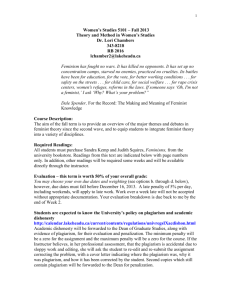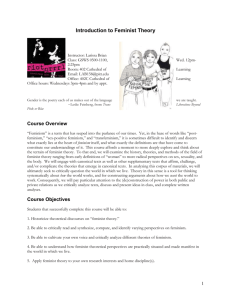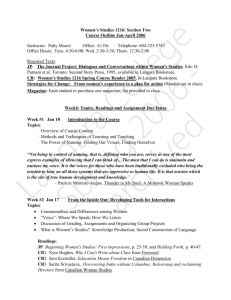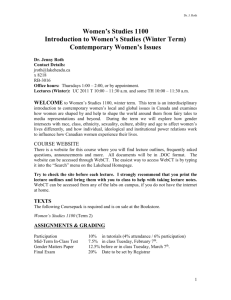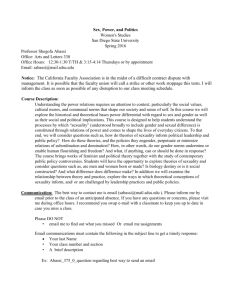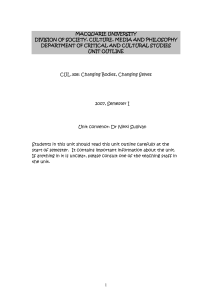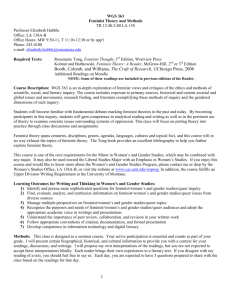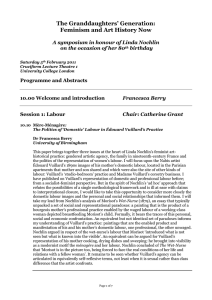SEMINAR IN FEMINIST ART AND THEORY Midterm take
advertisement
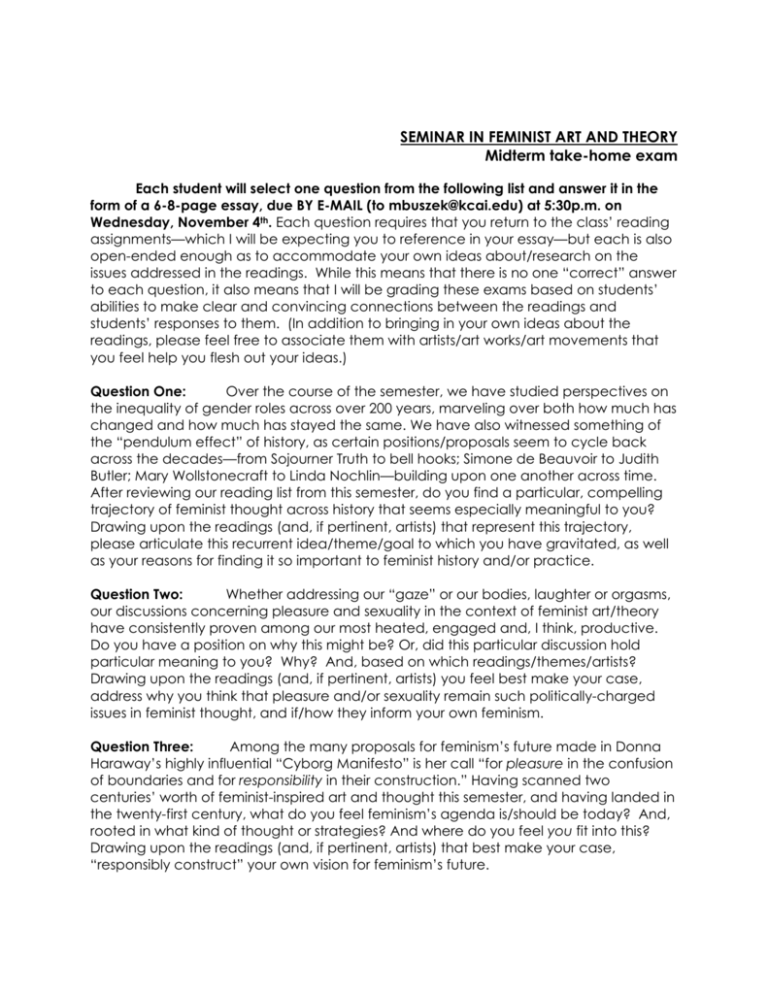
SEMINAR IN FEMINIST ART AND THEORY Midterm take-home exam Each student will select one question from the following list and answer it in the form of a 6-8-page essay, due BY E-MAIL (to mbuszek@kcai.edu) at 5:30p.m. on Wednesday, November 4th. Each question requires that you return to the class’ reading assignments—which I will be expecting you to reference in your essay—but each is also open-ended enough as to accommodate your own ideas about/research on the issues addressed in the readings. While this means that there is no one “correct” answer to each question, it also means that I will be grading these exams based on students’ abilities to make clear and convincing connections between the readings and students’ responses to them. (In addition to bringing in your own ideas about the readings, please feel free to associate them with artists/art works/art movements that you feel help you flesh out your ideas.) Question One: Over the course of the semester, we have studied perspectives on the inequality of gender roles across over 200 years, marveling over both how much has changed and how much has stayed the same. We have also witnessed something of the “pendulum effect” of history, as certain positions/proposals seem to cycle back across the decades—from Sojourner Truth to bell hooks; Simone de Beauvoir to Judith Butler; Mary Wollstonecraft to Linda Nochlin—building upon one another across time. After reviewing our reading list from this semester, do you find a particular, compelling trajectory of feminist thought across history that seems especially meaningful to you? Drawing upon the readings (and, if pertinent, artists) that represent this trajectory, please articulate this recurrent idea/theme/goal to which you have gravitated, as well as your reasons for finding it so important to feminist history and/or practice. Question Two: Whether addressing our “gaze” or our bodies, laughter or orgasms, our discussions concerning pleasure and sexuality in the context of feminist art/theory have consistently proven among our most heated, engaged and, I think, productive. Do you have a position on why this might be? Or, did this particular discussion hold particular meaning to you? Why? And, based on which readings/themes/artists? Drawing upon the readings (and, if pertinent, artists) you feel best make your case, address why you think that pleasure and/or sexuality remain such politically-charged issues in feminist thought, and if/how they inform your own feminism. Question Three: Among the many proposals for feminism’s future made in Donna Haraway’s highly influential “Cyborg Manifesto” is her call “for pleasure in the confusion of boundaries and for responsibility in their construction.” Having scanned two centuries’ worth of feminist-inspired art and thought this semester, and having landed in the twenty-first century, what do you feel feminism’s agenda is/should be today? And, rooted in what kind of thought or strategies? And where do you feel you fit into this? Drawing upon the readings (and, if pertinent, artists) that best make your case, “responsibly construct” your own vision for feminism’s future. ESSAY GUIDELINES: • Your paper must be written in the following format: Typed or computer printed, double-spaced, with no larger than one-inch margins and 12-point fonts. “Illustrations” are allowed, but they will be subtracted from your total page count. (In other words, papers where the author has tried to use computermagic to, say, spread five sentences across three pages are unacceptable.) All sources will be correctly cited according to the Chicago Manual of Style, a cribsheet of which will be handed out to you in class and linked to our website. PLEASE NOTE: Those who fail to correctly cite their sources according to the Chicago style will automatically have 10 points docked off the top of their paper grade. • Clearly, the midterm essay assignment asks you to return to our class readings to address the issues in the topic you’ve chosen. However, please feel free to conduct additional research not only with our library’s collection and resources, but also by perusing the resources at larger libraries such as UMKC, KU, or the KC Public Libraries. (Links to all these resources are available on our website.) These institutions’ databases (like Art Full Text, J-STOR and ProjectMUSE) may lead you to some interesting, recent writing on the topics that will not only help you articulate your position/s on the issues, but may also help you get started on formulating your final paper. Again, all papers will be expected cite any information used extensively from one’s research, including websites and audio/visual sources, according to the Chicago style. This said, I will remind everyone that those caught using large portions of any published research that do not properly cite the source will receive an automatic “zero” on the assignment and be reported to the Institute for plagiarism. Essays will be turned in VIA E-MAIL (to mbuszek@kcai.edu) BY 5:30pm on November 4th




